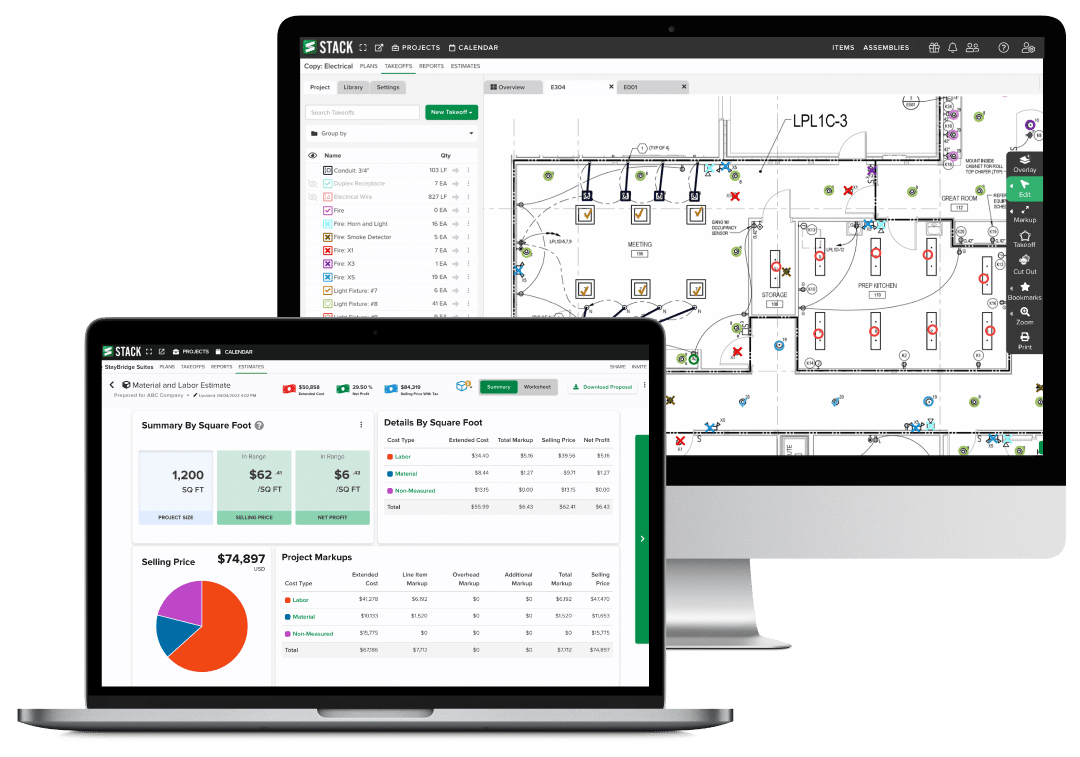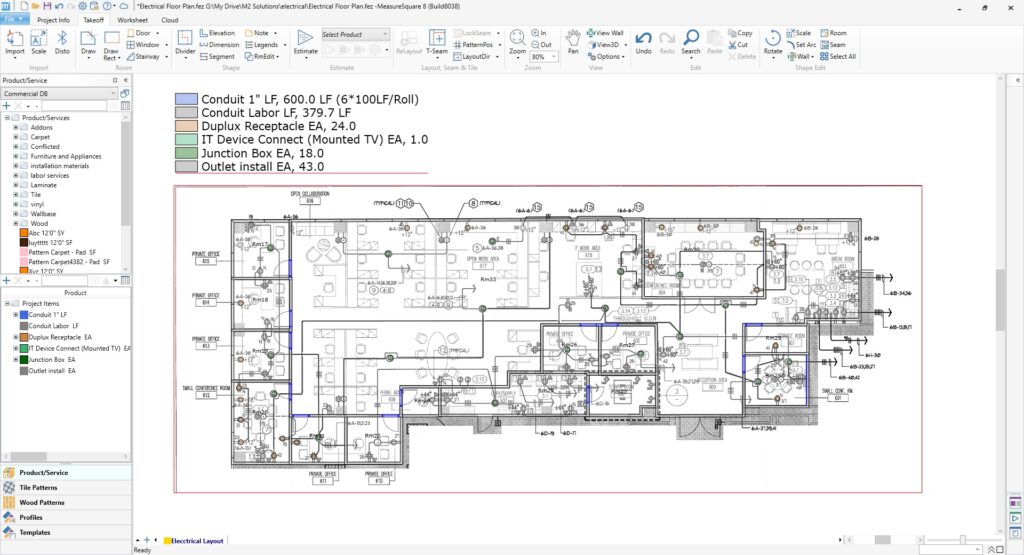Browsing the Intricacies of Electrical Estimating: Ideal Practices for Successful Proposals and Budgeting
As each project offers its one-of-a-kind set of challenges and variables, mastering the art of estimate needs a delicate balance of technical knowledge and tactical planning. From browsing varying product expenses to carrying out cutting-edge technologies, the landscape of electric evaluation requires a careful technique to accomplish earnings and affordable edge.
Comprehending Material Expenses
Comprehending product costs is a basic aspect of accurate electric estimating in building and construction tasks. The price of materials represents a significant part of the total project expenses and can greatly influence the competitiveness and earnings of a proposal. When estimating product expenses, it is critical to think about factors such as the kind and amount of products called for, existing market value, prospective variations in expenses, and any unique order or shipment costs that may use.
To make certain exact estimations, professionals have to remain educated about the most up to date trends and growths in the products market. Structure strong partnerships with providers can likewise offer valuable understandings and potentially cause cost-saving possibilities. Furthermore, using specialized software program or tools developed for product cost estimate can improve the process and improve precision.

Properly Estimating Labor Expenditures
To guarantee the financial stability of a building and construction project, accurate estimate of labor expenditures is vital in determining the overall costs involved. Labor expenses typically constitute a significant section of the overall project budget plan, making exact evaluation important for effective task completion within spending plan restraints. When estimating labor expenditures for an electric job, factors such as the extent of work, needed skill degrees, job timeline, and labor rates should be meticulously taken into consideration.
One key aspect of precisely approximating labor costs is comprehending the details jobs associated with the project and the equivalent labor needs. Damage down the job into specific components and designate labor hours per job based on previous experience or sector standards. Additionally, take into consideration any type of prospective challenges or unforeseen situations that may impact labor efficiency and adjust the estimates accordingly.
Collaboration with task supervisors, electrical service providers, and other stakeholders can likewise provide important understandings right into labor needs and help fine-tune the quotes. Concept Electrical Estimating Melbourne. By integrating all relevant variables and utilizing sector finest practices, electric estimators can boost the accuracy of labor expense estimate and boost the total success of the task
Leveraging Innovation for Estimation
Integrating advanced technical tools and software program can substantially streamline the process of approximating labor costs for electrical jobs, improving precision and efficiency in expense assessments. Electric estimators can take advantage of specialized software application developed for the industry, such as Accubid, McCormick Systems, or ConEst IntelliBid, to automate the estimation of labor prices based on task needs, products, and labor rates.
Financial Danger Monitoring in Bidding
Effective monetary danger monitoring is vital for successful bidding process in the competitive field of electric project evaluation. Electrical specialists encounter different monetary dangers when preparing proposals for tasks, consisting of inaccurate cost evaluations, unpredicted project complexities, and rising and fall material prices - CE Estimating Brunswick. To alleviate these dangers, service providers should take on critical monetary risk management methods
One key facet of economic risk management in bidding is performing complete cost analysis. This entails carefully assessing all job requirements, such as materials, overhead, labor, and equipment prices. By accurately estimating these expenses, service providers can minimize the threat of underbidding and prospective financial losses.
One more crucial approach is to include backup strategies right into the bidding procedure. Including contingency funds in the proposal price helps cushion versus unforeseen price overruns or job delays. Specialists need to likewise remain notified about market fads and product price variations to change their proposals as necessary.

Methods for Competitive Rates
Given the critical nature of precise cost evaluation and tactical economic risk management in bidding process, a fundamental element to take into consideration in making certain competition is executing efficient strategies for rates. Affordable rates strategies are vital for electrical estimators to stick out on the market while still preserving productivity. One effective strategy is to carry out thorough market research to comprehend current pricing patterns, competitor prices designs, and consumer expectations. By remaining notified regarding the marketplace, estimators can readjust their prices approaches to continue to be affordable without endangering on high quality or revenue margins.

In addition, applying tiered rates structures or supplying bundled service packages can appeal to a larger variety of clients with differing budget plans and needs (Concept Electrical Estimating). By giving choices that deal Concept Electrical Estimating Melbourne with various client sectors, estimators can enhance their opportunities of winning proposals and protecting successful projects. Overall, a well-balanced pricing technique is crucial for staying competitive in the electric estimating industry
Verdict
To conclude, effective electric estimating requires an extensive understanding of material prices, exact labor expenditure estimation, usage of technology, effective monetary danger management, and calculated affordable prices. By incorporating these finest techniques into the bidding process, service providers can increase their chances of remaining and winning quotes within budget plan. It is crucial for electrical estimators to constantly fine-tune their abilities and stay upgraded on market trends to browse the complexities of approximating efficiently.
Labor expenditures generally constitute a substantial portion of the complete project budget plan, making exact evaluation critical for successful task completion within budget plan restrictions. When estimating labor expenses for an electrical task, aspects such as the range of job, called for skill levels, project timeline, and labor prices have to be meticulously thought about.
Integrating innovative technological devices and software can substantially streamline the process of approximating labor costs for electric projects, enhancing accuracy and efficiency in expense evaluations. Electric estimators can leverage specialized software created for the industry, such as Accubid, McCormick Equipments, or ConEst IntelliBid, to automate the calculation of labor expenses based on job demands, materials, and labor rates. Electrical service providers face different monetary dangers when preparing bids for tasks, consisting of unreliable expense estimations, unanticipated project intricacies, and fluctuating material prices.